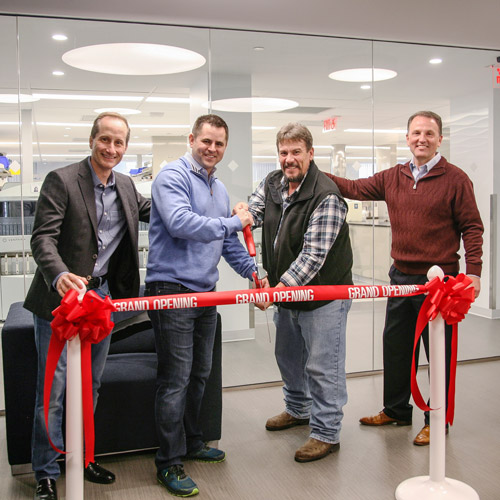
“Build Disney World, don’t build Disneyland.” That’s the suggestion of Glen Scott, president of real estate at Katz Group, when he discusses the organization’s plans for the ICE District in Edmonton, Alberta. A real estate lawyer for 28 years, Scott worked in the office of the chairman at Katz Group before being offered his current position by the group’s namesake and owner, Darryl Katz.
“The ICE District is, by way of scale, one of the largest sports and entertainment districts in North America, if not the world,” Scott notes. “It’s an extraordinarily large project, and all the component parts are being built at the same time. You don’t typically see projects like this in North America. You don’t really see them outside the Middle East or China.”
Which brings us back to Disney World: “The area outside of Disneyland isn’t owned by Disney; there’s all sorts of competing corporate interests,” he says. “Whereas with Disney World, they bought about 43 square miles, and so they control everything within that space. Including Rogers Place, the Katz Group has assembled over 50 acres of land in downtown Edmonton—a giant land assembly—which allows us to build this entertainment district with all these linked elements that are focused around [Edmonton’s multi-use indoor arena] Rogers Place and yet have their own discrete identity as well.”
Assembling an Expert Team
Managing a project as large as the ICE District takes a considerable amount of staff, and they need to have the right kind of experience for the job.
“The main thing I’m looking for is subject matter expertise,” he explains. “I fly a hotel expert in from the US every month to work on our JW Marriott hotel because there’s not a lot of people walking down the street in Alberta that have built 400 hotels throughout their career.”
As one can imagine, finding that kind of talent can be a feat in itself. “Notwithstanding the economic downturn in Alberta, it has been challenging to find these types of employees,” Scott says. “People with the kind of expertise we’re looking for are usually employed, and they’re always going to be employed.” Scott has found some of the right people locally, however. “Some positions I had luck with, like our mechanical staff, since Alberta is mainly an energy economy,” he says. He filled other key positions with people he’d met throughout his career as a commercial real estate and planning law attorney.
Putting the Pieces Together
Once the staff has been assembled, everyone needs to be working together toward a shared goal. “There’s more divergent opinions you experience in a real estate organization than you might get in a legal environment,” Scott explains. “In a legal environment, you’re being instructed by someone very senior in an organization about what they need your assistance on. If you’re running a real estate company, there’s a wider scope of people you need to relate to.”
What’s been most helpful for Scott in terms of relating to his staff? “It’s just about learning to listen,” he says. “Even within the English language, people communicate differently, so the most important part of working in real estate is trying to understand their perspective so you can get everyone on the same page moving forward.”
“I also like to make sure the team knows what the end goal is,” Scott adds. “Once you’ve done that, it’s really about getting the knowledge levels and ownership levels as embedded in as many levels of the organization as you can. I’m not a really prescriptive person; I’d much rather people come up with ideas and what we should be pursuing.”
The end goal is starting to come into view for Scott and his team. “In about 24 months, the first phase will be done,” he says. “Then we’ll have our second phase, which will actually probably begin before the first phase is done. We’re working on the planning for it as we speak, but I’m cautiously optimistic that we’ll have more time to plan for the second phase, so it might not have quite the same amount of intensity.”
Photos: Christophe Benard Photography, Curtis Trent


